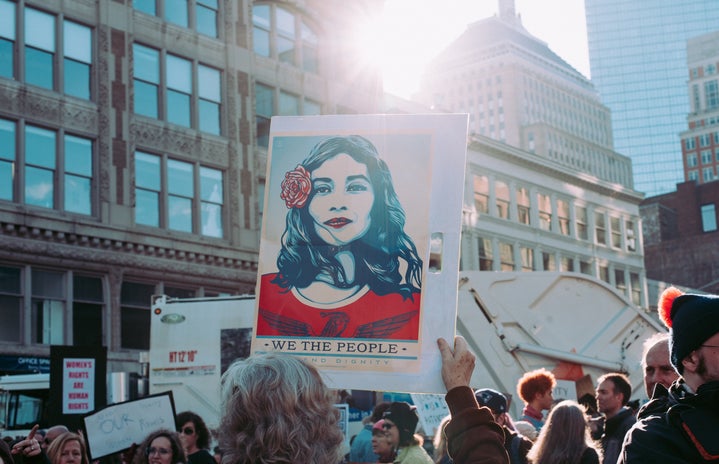2018 was a historic year for women in the U.S., with now prominent names such as Alexandria Ocasio-Cortez, the youngest woman to be elected to the House, making headlines as women in the United States House of Representatives number at a record-breaking 102. Already, 2019 has continued the trend as Democratic candidates for president continue to announce their bids for a 2020 run. Four prominent Democratic female candidates have already tossed their hats in the ring, just one month into 2019, guaranteeing an incredibly diverse and crowded primary race. Elizabeth Warren (D- MA), Kamala Harris (D- CA), Kirsten Gillibrand (D- NY), and Tulsi Gabbard (D-HI, 2nd District) have all officially announced their candidacy.
Women candidates have played especially important roles in 2016 and 2018 elections, and 2020 seems to be continuing that pattern. For Democratic voters especially, selecting a female presidential candidate is a priority for many. A major indicator of this is the level of female democratic participation and voting behavior in relation to other women candidates in the last two national elections. In 2016, Hillary Clinton averaged a 20 point lead over Bernie Sanders for women voters and in 2018, 50% of women who ran in Democratic primaries across the country won the party’s nomination. According to CNN, 58% of Democratic primary voters were women in 2016, demonstrating the immense impact that women can have this upcoming election cycle.
Some members of the Democratic party have expressed reservations over the nomination of a female candidate to presumably run against President Donald Trump, however. Concerns over rhetoric reminiscent of the 2016 election in which Hillary Clinton was all but demonized by Trump and his base continue to contribute to questions of whether a female democratic candidate would be strategically beneficial. Trump’s ability to not only carry substantial support among conservative women but a majority of white women as a whole in 2016 demonstrates the important differentiation between democratic women voters and women voters as a whole. For Democrats, it is not a question of whether democratic voters are more inclined to support a female candidate, but independent voters.
Others have argued that the election of a female candidate is long overdue and denote Donald Trump’s election in 2016 as a turning point for many voters. Recently, Trump’s standing in the polls seems to demonstrate a decreasing support rate amongst women. In an October poll done by the Pew Research Center, 63% of women disapprove of Trump’s performance. The female candidates who have already announced their running, including Elizabeth Warren and Kamala Harris, are already incredibly prominent and have been unafraid to confront and challenge the White House.
The discourse surrounding whether the country is “ready” for a female candidate also sparks questions of sexism and gender relations in the U.S. political scene. Questions surrounding candidates’ gender seem to work their way into every article and conversation in regards to her ability to win in the general election. Often, comments on gender replace questions of ability and qualifications for female candidates, especially following Hillary Clinton’s 2016 loss. However, some concerns regarding the effects of gender-based rhetoric are not unfounded. Donald Trump’s history of gender-based comments and past accusations of sexual harassment helped define the 2016 election and some Democratic strategists fear that running a female challenger would once again reduce the general election issues to misogyny.
Warren, Harris, Gillibrand, Gabbard, and any other prospective female candidate will no doubt face the realities of existing misogyny throughout the primaries. However, they will also be supported by the continued impact of the 2018 election cycle. They will also find significant support among female Democratic voters, if not American women in general, who are ready to see a female president. Regardless of whether the Democratic party ultimately nominates a female candidate, however, the primary races are sure to continue to chip away at the glass ceiling and contribute to a shifting dynamic toward a more equal and representative political system.
https://www.cnn.com/2019/01/16/politics/women-2020-democratic-primary-history/index.html
https://www.nytimes.com/interactive/2019/us/politics/2020-presidential-candidates.html
https://www.nytimes.com/2018/10/19/us/politics/democrats-women-president-2020.html
https://www.nytimes.com/2019/01/05/us/politics/women-candidates-president-2020.html


